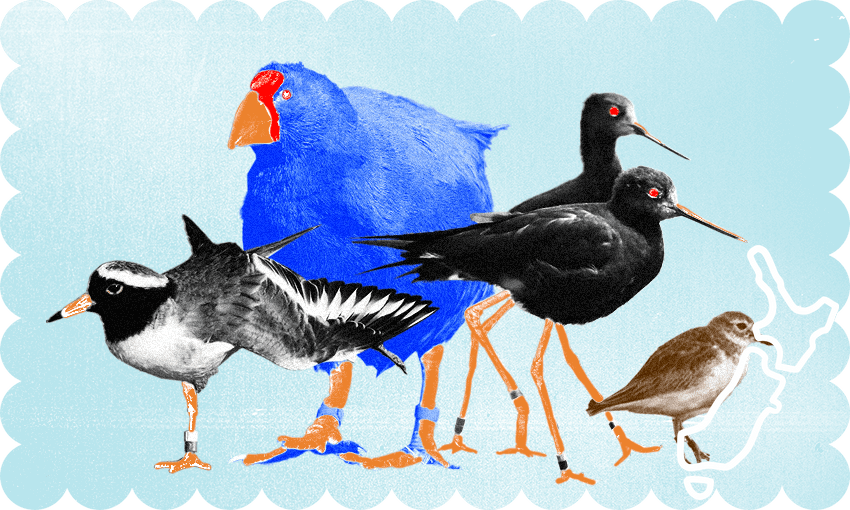Aotearoa’s favourite feathery election has made a unique comeback. Marcia Welch profiles some of the most endangered birds in the running for Bird of the Century.
Fraudulent votes, rouge bats and the contentious exclusion of a certain flirty, green chicken (the kākāpō), Bird of the Year is always a bit of fun. This year is no exception, because nothing is more lighthearted than contemplating the death of a species.
The 2023 election is sporting a new name and five shiny new candidates to celebrate Forest and Bird’s centenary. The plot twist is that all five of those additions are extinct. But the good news is that the other 72 birds are not (yet).
The Bird of the Century newbies include the huia, which you’ve heard of, but also the piopio, the bush wren, the whēkau/laughing owl and the South Island snipe. Probably a good reminder that we’ve lost more important things than a World Cup.
Considering we call ourselves “Kiwis”, the fact that 82 per cent of our birds are threatened is embarrassing. But there’s a silver lining. Everyone knows Bird of the Year is just a stepping stone to fame. At this point, a podcast deal or a brand endorsement could be life-changing.
Here’s an insight into the fabulous minds of the most threatened birds up for Bird of the Century. Unsurprisingly, staring death in the eyeballs on a daily basis provides them with some deeply profound birdy wisdom.
Tara iti – Fairy tern
Population: c.40
Despite being the rarest bird in Aotearoa, the fairy tern is surprisingly humble. These dainty little sky pandas are the acrobatic angels of the North. But being this ludicrously endangered means having a painfully small dating pool. For them, winning Bird of the Century means they might get a chance to date someone other than their cousin.
Tūturuatu – Shore plover
Population: c. 250
If there were a Parent of the Year, it would go to tūturuatu. When their babies are threatened they’ll fly into a performance so captivating that even the smartest of predators will forget, for a moment, they were drooling after their young and stop to stare at the adults distracting broken wing display. Even when you’re on the brink, risking your life for your children is always worth it. Winning might mean having enough time to dust their Oscars and take the Ferrari out for a spin.
Kakī – Black stilt
Population: c.143
Turns out being hot doesn’t protect you from extinction. All black, tall, sleek and with legs to die for, the kakī population dropped to just 23 in the 1980s. Let’s hope they make a stronger comeback than the All Blacks because long days staring at your beautiful reflection on a lake’s surface isn’t as enjoyable when peril is at your door. Kakī have learnt it’s what’s on the inside that counts – and they sure have plenty of heart.
Takahē – South Island takahe
Population: c. 400
If you have wings that don’t work in Aotearoa, you’re guaranteed two things: making the threatened species list and some meaty walking sticks. Impressive as this is, the takahē is just sick of being called a “fat pukeko”. These well-rounded birds want to live in a world where their native grassland is stoatless and frolickable, and people call pukekos “skinny takahē”.
Tūturiwhatu – Southern NZ dotterel
Population: c. 126
Unlike their Northern counterparts, these hardcore little legends nest up in the mountains of Rakiura/Stewart Island and then come down to brave the coast for some kai. While tourists have to frequently fight off kiwi on arrival to the island, no tourist has ever been reported fighting a dotterel – or seeing one for that matter – which only goes to show how rare they are. Sadly, not even their tough attitude can protect them from feral cats. They dream of a time when they can head to the South Sea Hotel for a carefree Speight’s without looking over their shoulders.
Voting for Te Manu Rongonui o te Rautau/Bird of the Century closes on Sunday 12 November at 5pm.



